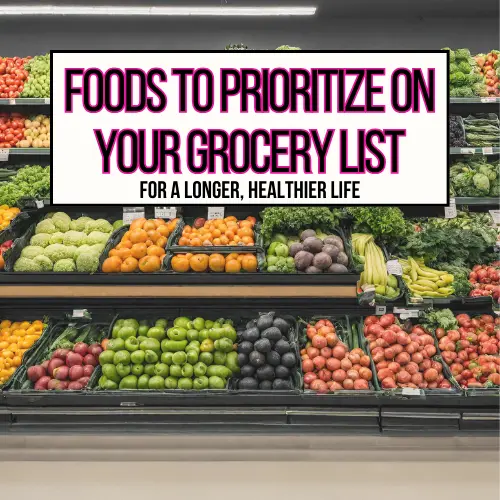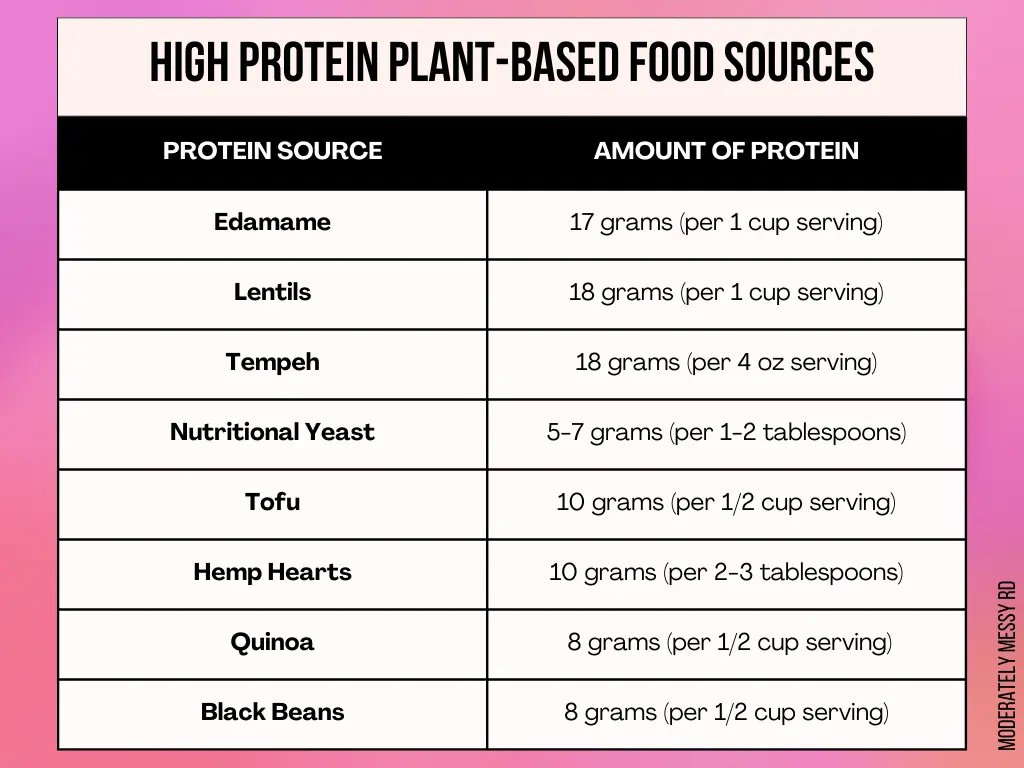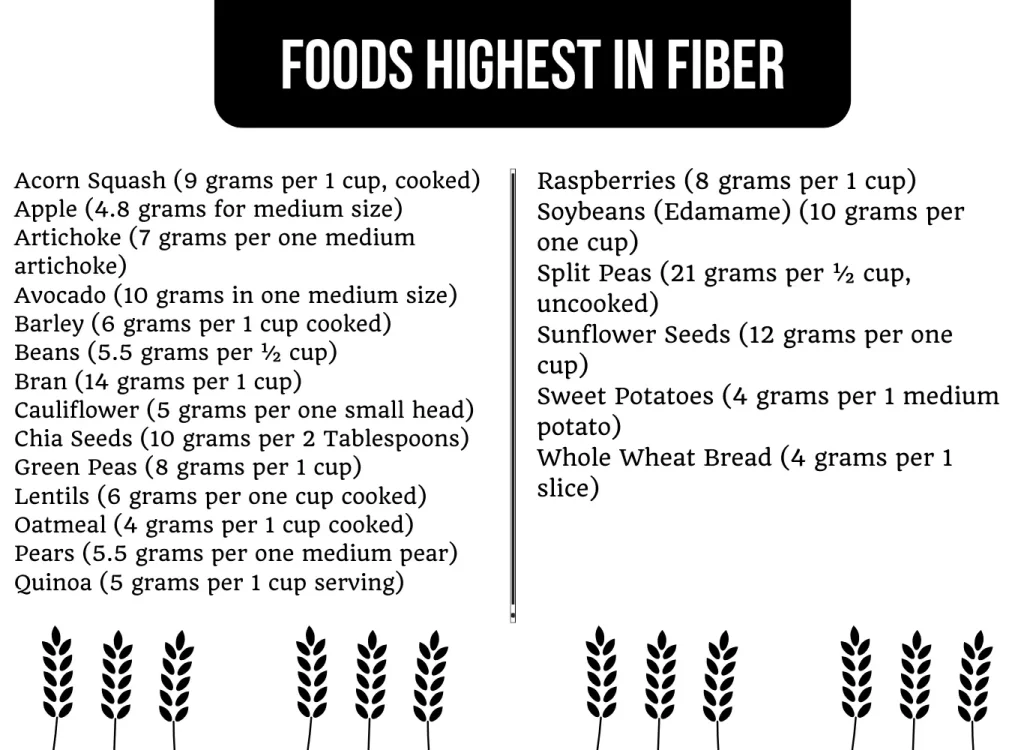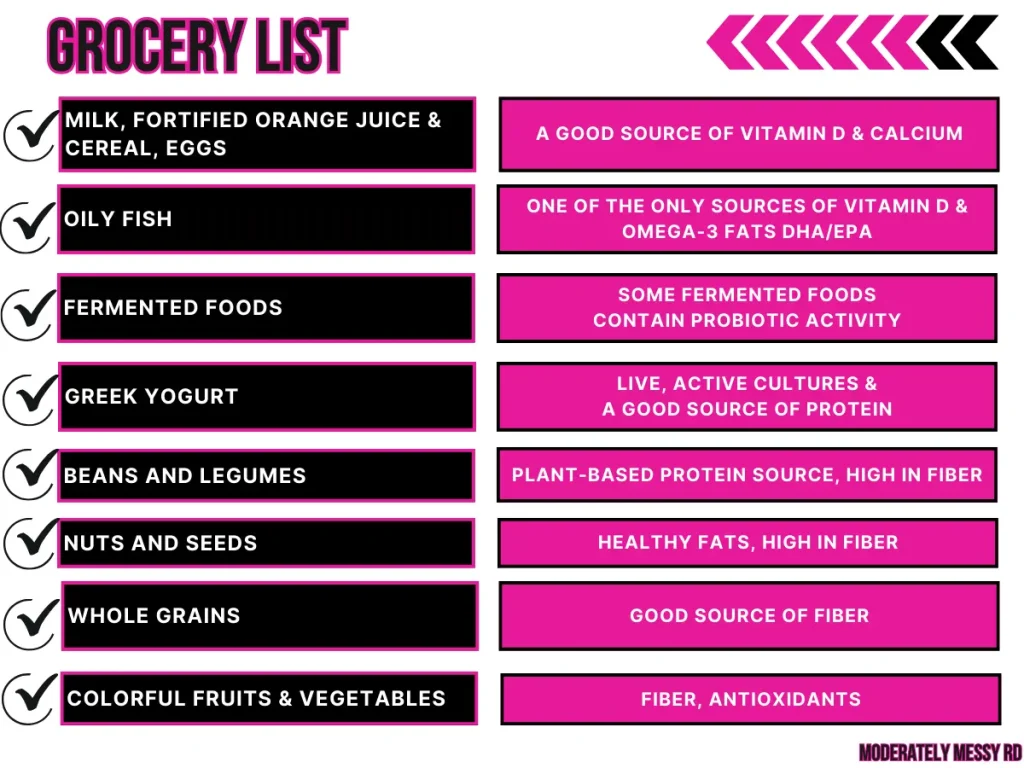After all the research I’ve done lately, I’ve decided to compile my recommendations for top foods to prioritize on your grocery list for a healthier, longer life. These foods are backed up by research with some “hidden gems” I think will become increasingly popular in the next few years.

You might think introducing new foods to your diet just adds to the overwhelming mental load. I get it. Life gets in the way and it’s just so much easier to continue what you’ve been doing, even for a dietitian like me.
However, these are all backed up by evidence-based research! This list is as much of a reminder for me as it is for you.
So grab a pen and your grocery list (or in many cases, your phone) and get ready to add some new foods to it. You might also be thinking – why can’t I just take a supplement instead of eating all these foods? That will also be discussed!
1. Vitamin D Rich Foods
Most people synthesize vitamin D through their skin after being exposed to the sun’s ultra-violet rays – but what about those dreaded winter months? When that sun isn’t shining, it’s up to us to consume vitamin D rich foods from our diet – which can be a challenge as there just aren’t many of them.
Vitamin D deficiency has been linked to an increased risk of osteoporosis, certain cancers, depression, anxiety, inflammation, and gut dysbiosis.
Add these foods to your grocery list to increase vitamin D intake:
For more on vitamin D, including recipe ideas, read Increasing Vitamin D Intake Through Foods.
2. Plant-Based Protein
Making it a point to eat more plant-based meals has been associated with a lower risk of heart disease, stroke, obesity, type II diabetes, high blood pressure and even certain types of cancer.
Plant-based meals also tend to be higher in fruits, vegetables and fiber. You don’t have to be a vegetarian or a vegan to reap the benefits of eating more plant-based meals. Try substituting meat with beans or lentils 2-3 days of the week.

For ideas on how to prioritize protein while following a more plant-based diet, read 35+ High Protein Plant-Based Meals.
3. Fermented Foods
You’ve probably heard about probiotics by now – which are live microorganisms that improve the “good bacteria” in our gut. Some fermented foods have probiotic activity, but it’s important to remember that cooking destroys the live, active cultures.
Examples of fermented foods with probiotic activity are kefir, kombucha, miso, sauerkraut, and kimchi. Yogurt also contains live, active cultures but in a much lower quantity.
Eating more of these foods might just improve your “gut health” – a recent 2022 study states that fermented foods can affect our gut microbiome long-term and should be an important element of our diet.
Kefir can be substituted for milk, kombucha can replace vinegar for salad dressings – check out this post on Food Swaps for Gut Health for recipe ideas.
4. Oily Fish
Oily fish like salmon, tuna, mackerel and sardines are not only some of the best (and only) food sources of DHA and EPA, but also vitamin D. A diet that prioritizes DHA and EPA has been linked to improved mood and a lower risk of inflammation, cognitive decline, and cardiovascular disease.
Even further, fish is a leaner source of protein – often prioritized with the Mediterranean diet. Aim for two 4-ounce servings twice weekly!
If you don’t like salmon, tuna is also a good source of both vitamin D and these essential omega-3 fatty acids.
For recipe ideas, try one of these 30+ Salmon Recipes.
5. High Fiber Foods
Fiber is one of the most underrated nutrients as most people are not consuming enough of it!
Fiber helps to stabilize blood sugars and reduce appetite by promoting feelings of fullness. Studies have shown it can reduce the risk of Type II diabetes, cardiovascular disease, and promote better gut health! A recent study stated that dietary fiber is the key nutrient for maintaining the diversity of our gut microflora.
It can be as easy as sprinkling chia seeds onto your yogurt – providing 10 grams of fiber per serving! Check out this list of high fiber foods, and add a variety to your grocery list each week.

6. Nuts and Seeds
Incorporating nuts and seeds into meals and snacks provide a little extra protein, healthy fats, and fiber.
They have been shown to reduce cardiovascular disease – the number one cause of death in the United States. With both anti-inflammatory and anti-oxidant properties, studies report consuming more nuts and seeds leads to reduced cancer risk.
It could be as simple as sprinkling sunflower seeds, chia seeds, flaxseeds, almonds or chopped walnuts to salads, yogurt, smoothie – the sky is the limit.
7. Whole Grains
Whole grains could be listed under the high fiber category but they really deserve their own spot on the list. The proven benefits are vast – from improved bowel regularity and decreased risk of type II diabetes, cancer, heart disease, stroke, and inflammation.
What I really want to stress is adding more variety into your diet. We get stuck on the same foods- bread, rice- but why not try quinoa, bulgur or barley once in awhile?
8. Colorful Fruits and Veggies
The various colors of fruits and veggies are due to phytonutrients, which give them their color. Each color is linked to specific nutrients and health benefits – this is why they say to “eat the rainbow”.
This essentially just means being more mindful of the various fruits and veggies you add to your grocery list because each color serves a different purpose. Most, however, are also a good source of fiber.
If you’re a toddler mom, you’ve probably got berries on your grocery list every week. If you check out the fiber table, you’ll notice that raspberries have 8 grams of fiber per serving! When they are not in season, buy them frozen!

Can’t I Just Take Supplements?
While I am all for taking a multivitamin to help fill in nutritional gaps if needed, there’s a reason that most experts recommend we consume most of our nutrients from foods.
Supplements are not regulated and they can be quite expensive – with limited research examining their actual benefits. All this evidence-based research stems from consuming these foods from our diet.
Also, the nutrients in foods are much easier for our bodies to absorb than in supplement form.
Even taking a probiotic supplement is tricky because there just isn’t enough research examining the thousands of strains and at the correct dosage.
Level Up Your Grocery List
Although you might be aware of the benefits from these foods, this post serves as a reminder to prioritize them! Even as a dietitian, I have to really make an effort to remember to add some of these foods to my grocery list.
I KNOW salmon is one of the best foods to eat, but my husband will not eat it – so I often don’t buy it! The solution? I need to make it for myself for lunch more often.
Get ahead of your health by making it a point to eat more of these foods- the evidence is all there, and only going to continue to grow as they are “hot topics” in food and nutrition.
